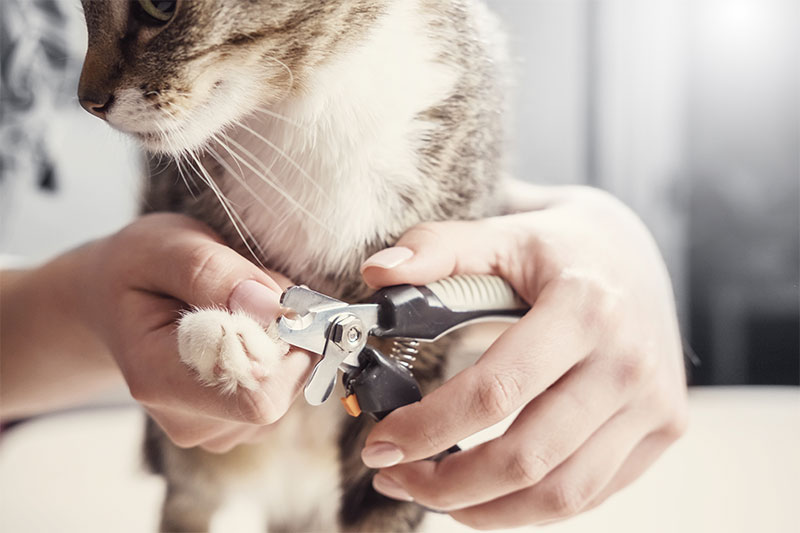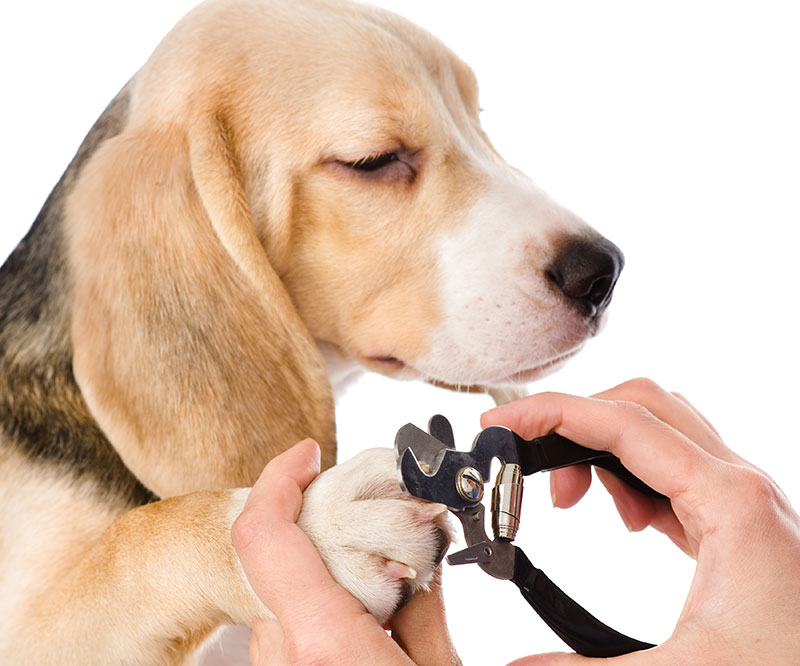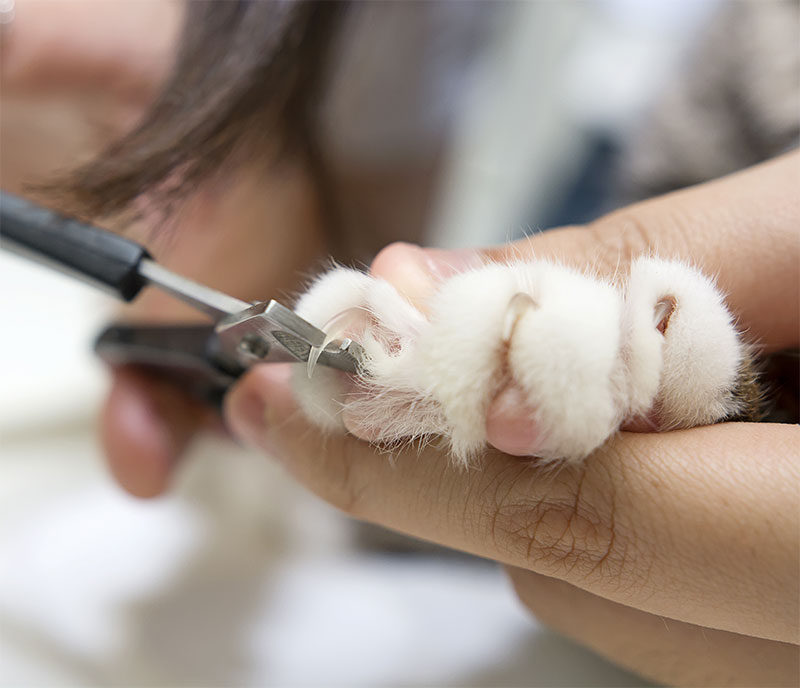A Note From Your Veterinary Team
We do not provide nail trims to awake dogs and cats even those with oral medications. This decision is based upon the following reasons:
- First, it is important to us that our patients are relaxed and comfortable here at Adobe Veterinary Center so that we can best evaluate and care for them both when they are healthy and ill. There is negative association with the clinic when dogs or cats have their nails trimmed here even though we try our best to minimize stress.
- Second, we want to protect our team members from the risks of being injured while restraining a pet for a nail trim.
- Third, we need to be available to help pets that need us for medical reasons. Our appointment schedule is fully booked each day and pets are sometimes waiting three or more weeks for medical appointments. Trimming nails takes 3-4 highly-trained technicians away from patient care, limiting care for medical patients.
Nail Trimming Instructions From Your Veterinary Team
Our website has information on how to trim your own pets’ nails and there are groomers in town that offer this service. We are available to provide counseling, training, and oral medication to help with this process if necessary.
If you or the groomer cannot get the nails trimmed due to abnormality or anxiety, we can discuss options at your next appointment.
We will continue to offer nail trims to any patient undergoing an anesthetic procedure for other reasons as we can do this while the patient is not awake.


Tips for Trimming Your Pet's Nails at Home
Cats and dogs have claws or nails on all of their paws that need regular maintenance (i.e. nail trims) to prevent injury, posture problems, and musculoskeletal pain. While we can trim your pet’s nails in our office, it can be useful for pet owners to know how to trim their pet’s nails at home too because, most often, pets need their nails trimmed more frequently than they need to come to the veterinary office.
5 Tips for Trimming Your Pet's Nails at Home
1. Use the Right Tool
Choose a nail clipper designed for your pet’s species and size and claw type (regular nails and dew claws).
2. Get Your Pet Used to the Tool
Before trimming nails, introduce your pet to the tool slowly and provide lots of treats at the same time. Start trimming slowly, only clipping away little portions of one or two nails at a time.
3. Handle Your Pet's Paws and Create Positive Associations
Additionally, get your pet used to you touching their paws. Give them treats and rewards and hold paws frequently.
4. Don't Cut the Quick
The portion of your pet’s nail that contains nerves and blood vessels is called the quick. cutting this area can be painful and lead to bleeding and infection. It’s easier to avoid on pets with light-colored nails, but difficult to see on pets with dark-colored nails.
5. Cut at a Perpendicular Angle
To trim a nail, hold your pet’s paw pad/toe between your thumb and forefinger and gently squeeze to extend the nail. Then hold the trimmer’s blades at a perpendicular angle to the nail. Leave at least 2 millimeters of the nail in front of the quick.








